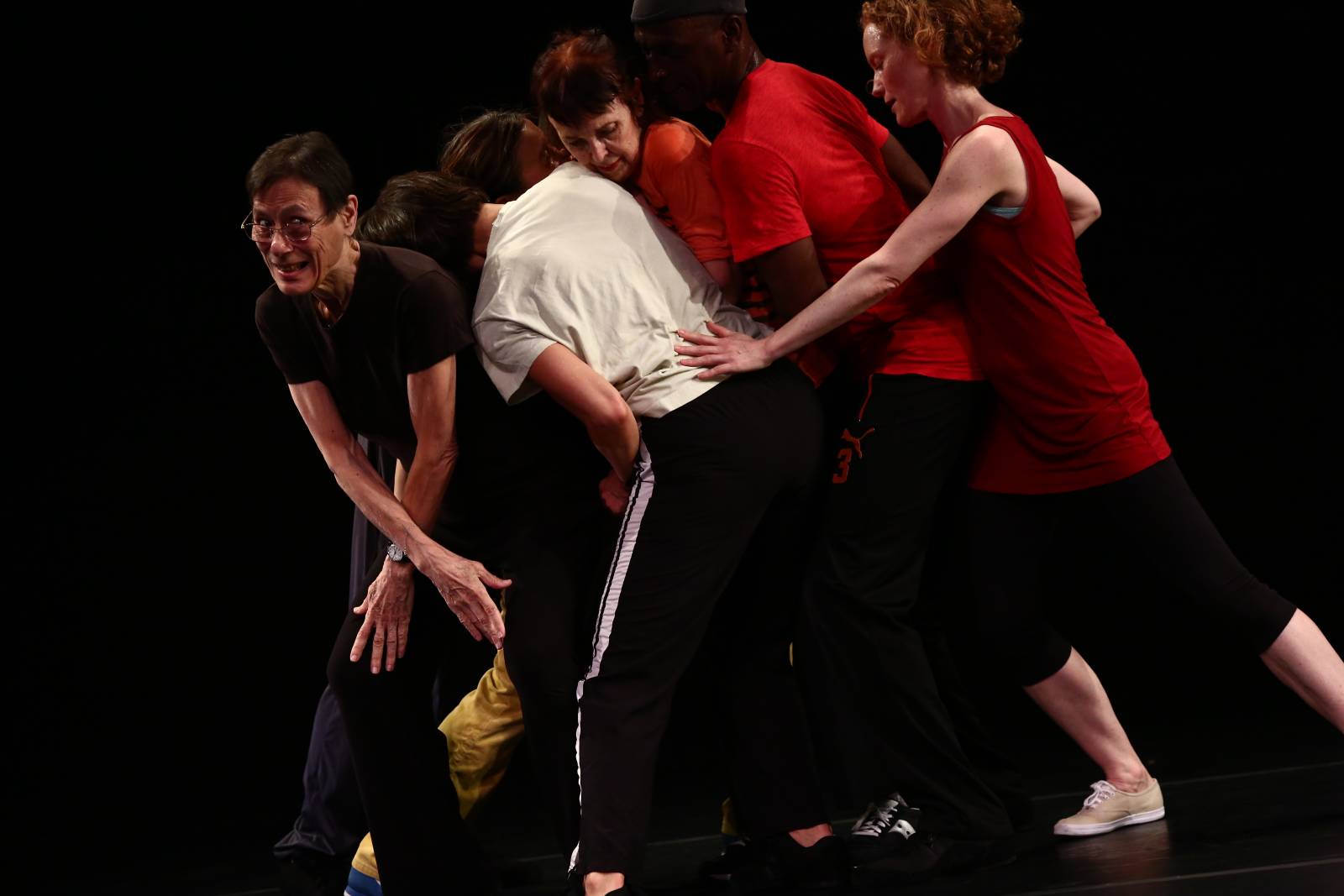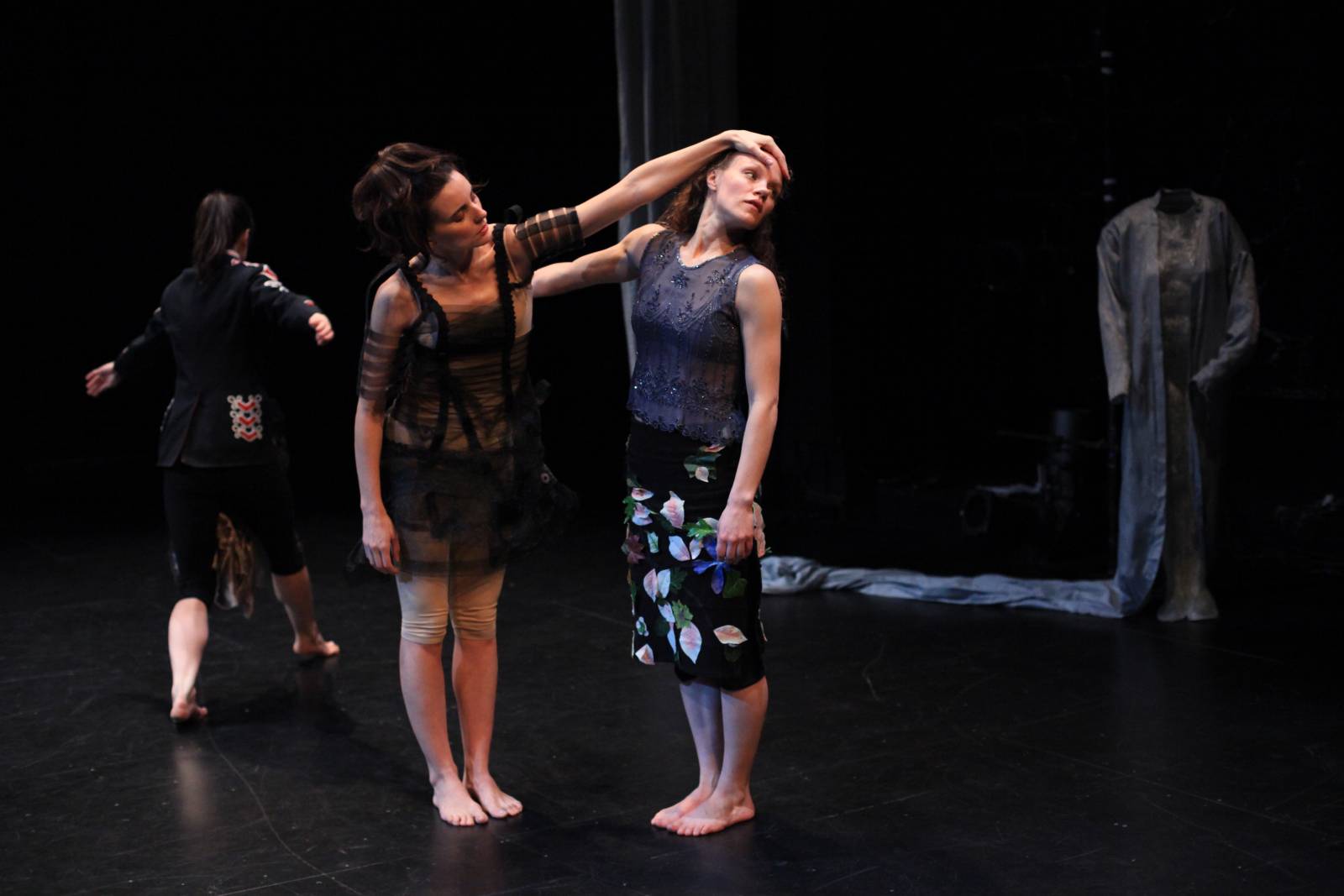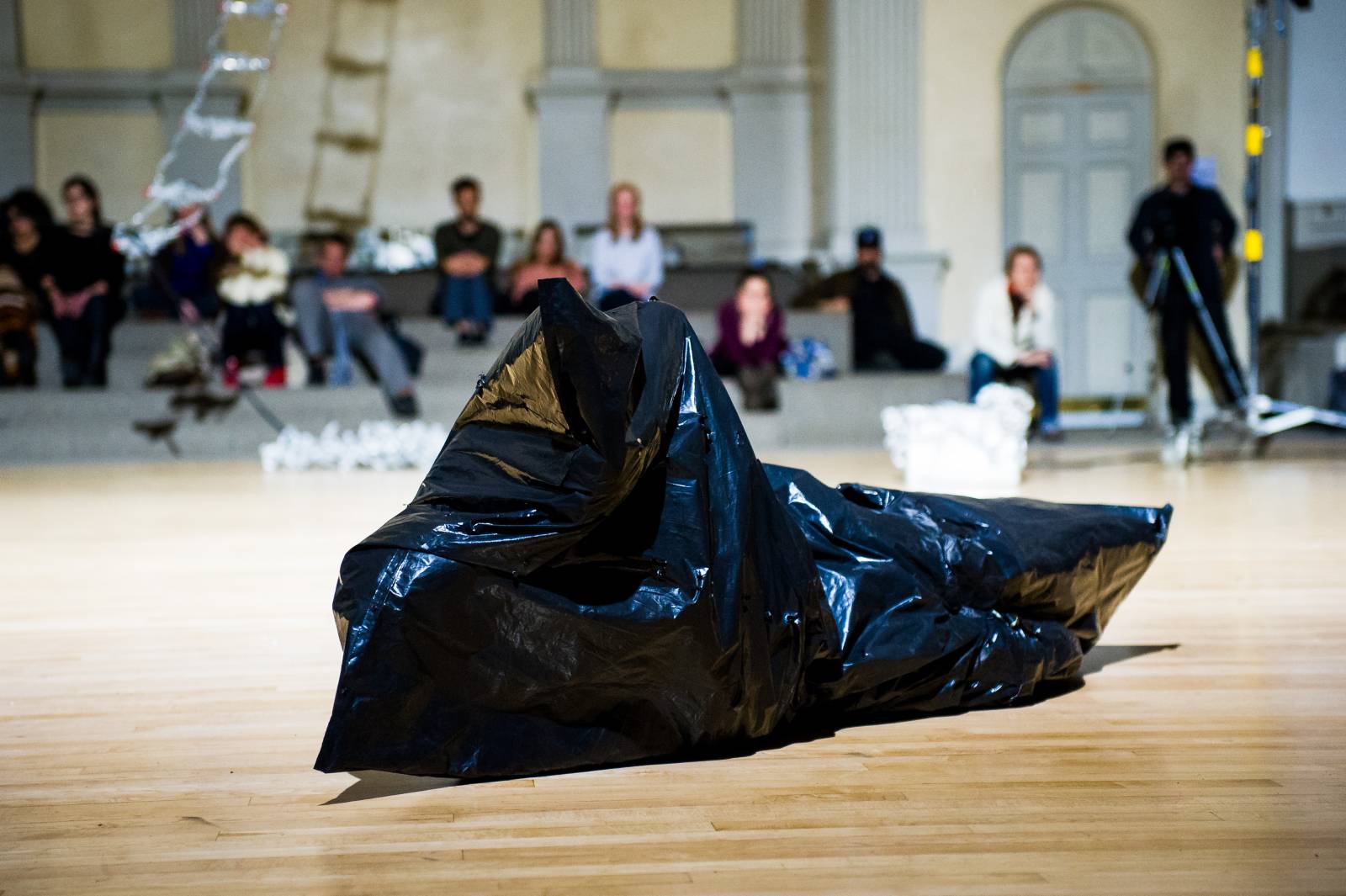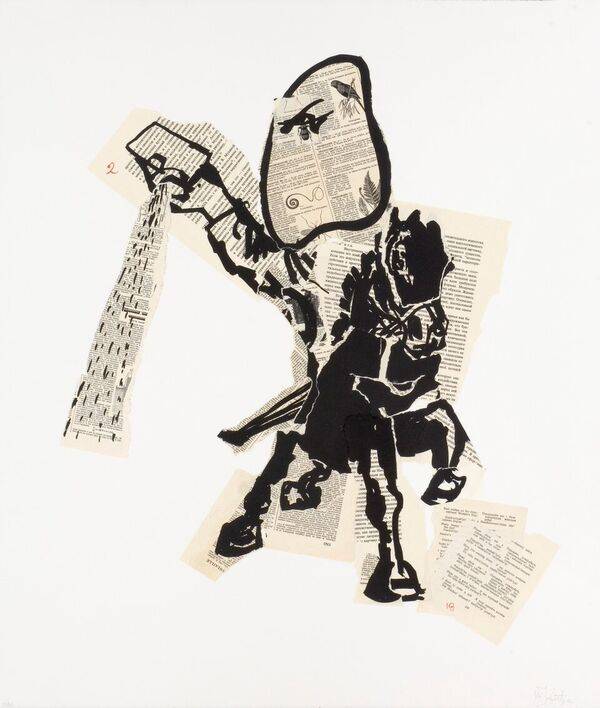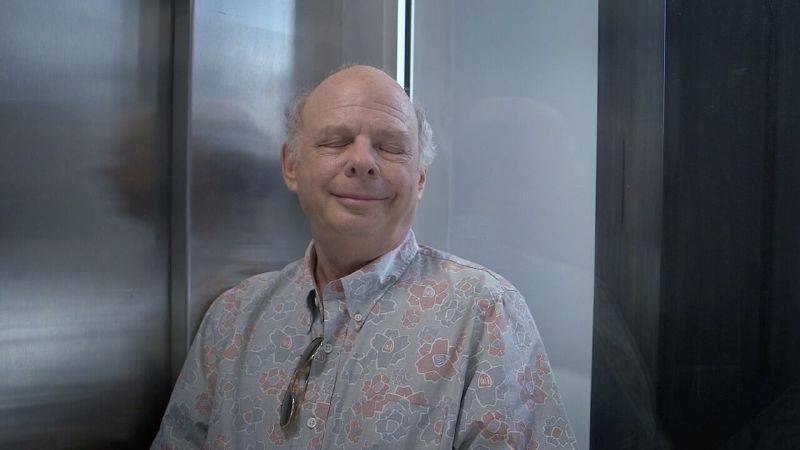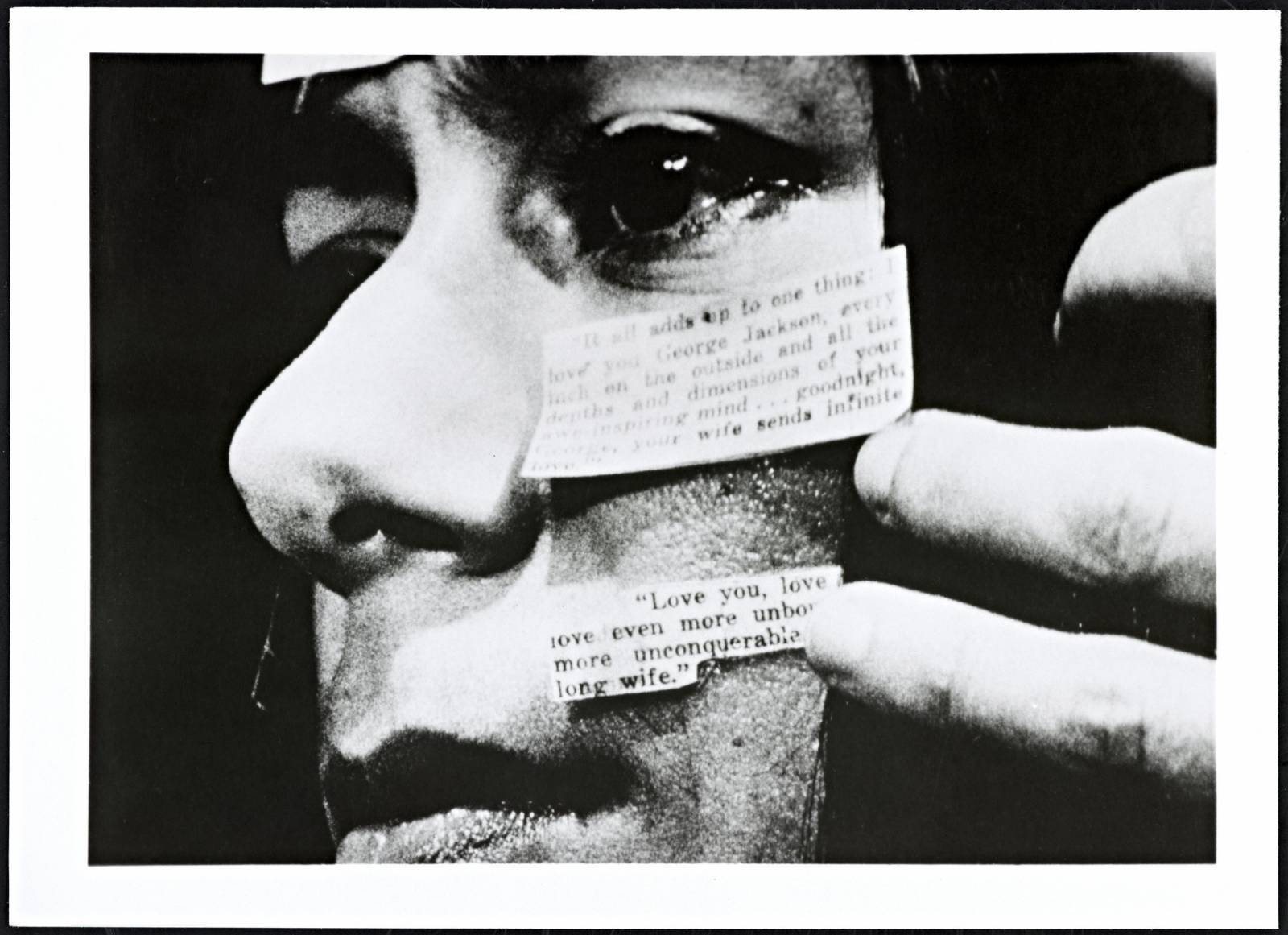Kathy Halbreich joined The Museum of Modern Art in the newly created position of Associate Director in February 2008 and was named the first Laurenz Foundation Curator in March 2016. Halbreich focuses on curatorial and strategic issues designed to amplify contemporary programs and initiatives at MoMA and MoMA PS1, both locally and globally. In 2014, she was the lead curator of “Alibis: Sigmar Polke 1963–2010,” organized with Tate Modern. This was the first major exhibition to include all of the mediums explored by Polke and was one of the largest shows ever organized at MoMA. Halbreich currently leads the curatorial team for an upcoming Bruce Nauman retrospective, a collaboration with Schaulager, where it will premiere in March 2018 before opening at MoMA in the fall. Prior to joining the museum, Halbreich served as director of the Walker Art Center for sixteen years.
IToP
You have had a long history of working with performance, both within the Walker’s context, which was multidisciplinary, and here within MoMA, which is primarily a visual arts museum. Can you talk about the factors that you attribute to creating the current heightened interest on the part of museums in presenting performance? Do you see it as having ongoing relevance and longevity, or is it a trend?
KH
Alfred Barr’s vision for MoMA was multidisciplinary, so I’m a little surprised by all the discussion around performance within the museum; there is nothing new about it. The history of people in motion here at MoMA goes back almost to the beginning, with Lincoln Kirstein establishing the Dance Archives here in 1939, ten years after the museum’s founding. There was a Department of Dance and Performance eons ago, though it didn’t last very long, so it’s true there has been dance for most of our history. It became more of a curatorial program recently. In 2008, when I arrived, there was a Department of Media, which then was renamed Department of Media and Performance Art to reflect its expanded focus. So I would say that the curatorial emphasis is a recent manifestation of a long-term commitment to dance in this institution.
I’ve been engaged with performance throughout my career. When I was the director of the List Visual Arts Center at MIT (1976–86), I worked with Ping Chong, who made a remarkable two-story installation with a huge pool and hundreds of Buddhas that took up an entire gallery. I also commissioned Stuart Sherman, a remarkable performance artist, to create a greatly distilled three-minute drama of Chekhov that occupied a gallery and was animated daily. And I remember Scott Burton—who made sculpture, of course, but we tend to forget that his sculpture was very often activated by performance—told me about Tom Kovachevich, who did these little performances with geometrically shaped paper that skidded across the surface of water. So really early in my career I didn’t think it was unusual to include people who were difficult to define as one thing or another in the galleries.
When I went to the Walker in 1991, there was a performing arts department, which had been founded by Sue Weil in the ’70s. My only change was to ask the directors of performing arts and film if I could change their title to curator. I wanted to have all the departments governed by curatorial aspirations. They were all doing the same things: research, commissioning new work, creating programmatic narratives, and engaging our publics.
I went to Bennington College, which had very strong dance, theater, and music programs. I didn’t realize until recently the impact that had on me. I don’t dance, but I must have soaked up the seriousness of the endeavor. Another reason for my interest in performance has to do with the under-recognized element of its social and political impact. When I came of age, in the late ’60s, there were protests in the streets, and that was a kind of performance, particularly when you had groups like the Bread and Puppet Theater in your back yard, as I did, and the Living Theater, which had a commune up the hill from Bennington. I never saw a hierarchy among the media. So, do I think it’s a trend? No, because that would suggest that it’s a kind of fashionable or seasonal activity. But performance pervades the history of art; it existed in Dada, Futurism, happenings, Fluxus, Judson. You could even say manifestos are a kind of performance; they are meant to be declared, and manifestos exist at almost every period of humankind.
IToP
But museums do seem to be more interested in performance again.
KH
That’s only partially true. For example, MoCA supported performance at its inception, as did Dia and the Kitchen. Both the Whitney and the Guggenheim have serious programs that involve dance and music. Maybe the distinction is between presentations of dance that are parallel to core programs and curatorially focused programs that are part of core programs.
IToP
Do you see new performance practices emerging at this moment that are different in some way from what we observed years ago?
KH
Like any art form, performance evolves and continues to be stretched by ambitious artists. For example, I recently saw a new piece by Sarah Michelson, which was commissioned by the Walker. I believe she is a genius, and I don’t use that word lightly, but the new piece was absolutely befuddling. I don’t know what it is. What would the child of theater and dance be called? It is very theatrical, includes multiple points of view, and demands of the dancers almost superhuman feats of concentration, discipline, and skill. All the performers on the stage are involved in various aspects of an athletic contest; for example, some do the scoring, others are announcers or referees, and, of course, there are the players, who possess the greatest physical skills. Sarah also was a performer, sitting at a computer, manipulating what I don’t know, but often punctuating the action by shouting, “Let’s play!” It’s quite literal in certain ways but, since you don’t know the rules, you can’t score yourself; you don’t know why somebody gets a point and somebody doesn’t. All your judgments are suspended. And it spanned six hours; the performance began at four in the afternoon and then transitioned at seven p.m. to what might be termed a more formal presentation. There were multiple actions and sounds and moving pictures, so it was impossible to simply focus on one performer. The audience was arrayed around the stage. Sarah managed to upset the language with which we describe or with which one is made.
IToP
Have you seen the terminology change during the time you have been observing performance? Are there words that you think are more resonant now or words that confuse you or irritate you?
KH
Well, I think that performance and performing arts are different. There are different artists involved. Performance has a shorter history beginning in the twentieth century, while performing arts starts with the earliest human rituals. But when Marinetti’s Manifesto of Futurism meets up with Kaprow’s theory of happenings and dance events at Judson Church, all clear distinctions collapse.
IToP
At the Center we used to have several discipline-specific initiatives, and about three years ago we consolidated; we had a dance, theater, and music initiative, which we consolidated into performance, in order to be more responsive to how artists are working in more hybrid practices. We’re trying to expand what is possible in terms of the projects we support. But also, we have been thinking about, what does this word performance allow that the words dance, theater, and music didn’t? So in a funny way I think of dance, music, and theater as the performing arts but performance as something that encompasses them but is not exclusively them. Performance, as I experienced it early on, grew out of the visual arts, out of Dada and happenings and then more recent manifestations, like some of Vito Acconci’s activities, from biting himself to following people, for example. So it has been interesting to me to see literacies or lack of literacies between and among the disciplines. That brings me to my next question. What does it mean, do you think, for a curator to be literate in performance today? If they’re engaged in presenting it, do they need the history of the practice in all the mediums, or are there benefits to being quasi-illiterate within one discipline or another?
KH
Of course it’s critical to be informed. I don’t think there is any benefit to being ignorant. However, there may be a benefit in being able to hold onto some small piece of innocence as you become more senior in your field, because one can easily become jaded or a dinosaur of a critic who thinks that everything already has happened before. The best curators are those who are immersed in but not confined by their disciplines, so they can knowingly set out to subvert, expand, or refine them. And, honestly, if a performing arts curator thinking about Merce Cunningham doesn’t know about Jasper Johns or David Tudor, I’d hate to imagine what develops.
IToP
It seems that the knowledge base has to be bigger now and more broadly based. In other words, if you want to present dance and/or experimental theater and/or performance that grows out of the visual arts, it requires more work on the part of the curator to be as conversant with those histories as possible. Do you agree?
KH
The best curators in the visual arts—and I have worked with many—actually have an enormous wingspan. Maybe your question has more to do with depth than broadness. And we tend to run at warp speed these days, which makes any in-depth pursuit a minor miracle. I once scolded a young curator of performance art who stated emphatically that museums were interested in performance as an outgrowth of the death of exhibitions. I told her she needed a firmer grasp on the history of exhibitions before burying the life pursuits of many of her colleagues. A bit of success had blinded her, allowing for an easy or superficial response.
I think it’s very easy and dangerous to adopt a language that is rooted in a transition or trend and not interrogate it at all. For example, people talk about de-skilling, which is a word I really don’t use, because I think anything that is purposeful is not about a willful lack of skill, even if awkwardness or the quotidian is emphasized. Of course there is a kind of youthful desire to rethink the prior generation’s definitions of craft; for example, it’s fascinating to see what today’s choreographers are doing with Merce Cunningham’s engagement with chance and vernacular movement. But what artists are really looking for most often is a way to free themselves from the past, and that takes both great skill and a lively intelligence as well as skepticism. I think rather than emphasizing de-skilling, we should look at how choreographers have dealt with the purity that became a foundational aspiration of modernism. We’re talking about people and processes that have histories, and to rethink the past requires a deep understanding of it. We did just start a series of books on individual choreographers, because I felt we should be involved in new scholarship in dance just as we make catalogues for exhibitions. We’re focusing on Ralph Lemon, Sarah Michelson, Boris Charmatz, and Steve Paxton, all of whom have helped shape the dance program here.
IToP
The relative dearth of scholarship around dance is one of the reasons that we have been interested at the Center in trying to create a more discursive conversation around and historical scholarship about dance. On a related note, what would you say is the responsibility of the museum toward documentation and interpretation of performance?
KH
I think we must take it as seriously as anything else we do. The issues are difficult but central; for example, if MoMA buys Simone Forti’s props, as we just did, what are we really buying? In this case, we committed to keeping Simone’s dances alive in perpetuity by continuing to train dancers to make these works. In a sense, the documentation and objects we acquired permit the dances to remain, to be activated. Now, there are particular challenges for presenting dance in a place like MoMA. One is, the program often is over in three days. The second is something that I actually feel is very useful, but people will argue with me: we have no theater, so the dance has to take place in a public arena where most people will serendipitously come in contact with it. But I like the fact that people may be exposed to something they didn’t come to MoMA precisely to see.
IToP
It’s part of the adventure.
KH
Right. Again, it’s this idea of a kind of innocence, that you can see freshly. The experience of looking at art is full of pleasure, surprise, confusion, and challenge. For example, seeing the Picasso sculpture show here reignited my interest in Picasso, because he was so wildly unrelenting, restless, and inventive; it absolutely brings you to your knees. So that is a surprise. And seeing Jérôme Bel and Boris Charmatz in the atrium, or watching Trajal Harrell in a gallery that overlooks the garden at night, with the city as his set, are thrilling experiences and very different from those I might find at Danspace or the Brooklyn Academy of Music.
Now, I will say that what Jenny Schlenzka did with Xavier Le Roy was the most successful retrospective I’ve ever seen of a dancer. It took place in the largest gallery in MoMA PS1 over a series of weeks. It had a cast of dancers, whose own stories were braided with Xavier’s autobiography during the course of the day; their own movements were given the same kind of primacy as his were, so it really was this story of multiple lives framed by a relationship with the author who brought this all together. Most visitors stopped before entering the gallery, and some were genuinely disturbed. But those who lingered became engaged with a performer who made a dance for them that elaborated his or her own history in words and movement. It challenged a lot of thinking about the role of the choreographer, the duration of a dance, about the kind of muscle memory of dance, and the—
IToP
The archive of the body.
KH
Exactly. And those dancers who had learned Xavier’s moves were still exhibiting their own history through their interpretation of those moves in their bodies.
IToP
Something that happens with Bel, too, is that sense of an autobiography of the body being engaged. Do you think Le Roy’s practice, which has a very conceptual framework, lent itself more readily to a museum context? As opposed to someone who is more dancerly, if you know what I mean?
KH
The challenge of working in places like MoMA PS1 or MoMA is that without the conventions of a stage, you’re often sitting right next to the dancer; there is so little distance and, consequently, illusion. I remember Ralph Lemon saying it was an apocalypse when he first recognized that he could hear the breathing of his audience. There is a collapse of theatrical space and conventions, and those are very exciting attributes.
IToP
How do you work with or against the conditions of your site to ensure both that the visitor has an optimal experience and that the artist is satisfied? Museums were not necessarily built for this. In her interview with us, Yvonne Rainer is quite declarative about the lack of sprung floors and showers in museums, all the practical considerations.
KH
Was that after her performances here or before? Because she was very skeptical going into her performance and very happy coming out of it. I thought the dance, as embodied by mature dancers, some of whom had danced with her for a really long time, was, among other things, a riveting and honest exploration about aging and what remains to be done.
IToP
Yes, she talked a lot about that. “Now that I’m”—what is she, eighty? “This is what I want. This is how I want it.”
KH
She had to accept a different set of possibilities here; there was a lot of prior discussion that allowed her to trust Ana Janevski, the curator, and perhaps to jump over her normal set of demands. It took place where Trajal did his dance, on what we call the sculpture platform, which is outside the fourth-floor galleries; however, she had the audience with their backs to the garden, focused entirely on the dancers, who were contained in a very specific stage made for the space. The performance grew out of her desire to sleep under the Rousseau painting of the gypsy, which had been a very important painting to her when she first came to New York. She ended up not doing that, but the conversation around our expectations and those of the audience led her to take the risk with us. And the painting had a starring role.
The experience was unusual: I was watching this dance with only a hundred people in the audience, and the dancers were very close, so I saw what was arduous and what was playful; I saw them as people with personalities. You don’t see that from the balcony. It was such an extraordinary luxury.
IToP
They get objectified to a degree by the distance and the conventions of being in the audience and where the stage is.
KH
Yes, and when you watch someone here, it is clear that this is another human being doing something, and that is what stops you. It’s not, you know, this is the Demoiselles d’Avignon and you must see it. It’s that here is a person doing something, perhaps strange, rooted in the same space you are and identifiable as another human being. That is very magnetic.
IToP
It is the kind of empathy that art can create at its best.
KH
Exactly. And maybe it’s easier to have empathy for something that is also breathing, like you are.
IToP
Does the space of the museum itself become a muse to the curators? Does the big atrium, for example, suggest certain possibilities where performance is concerned?
KH
The atrium is not for everyone. But I have talked to artists who have performed there, and they are challenged by it and no two do the same thing, because the space is really odd. You have balconies, so you have to think about people looking down at you. To see Anne Teresa De Keersmaeker from above dancing in sand, basically tracing circular drawings with her feet—I was absolutely riveted, and the experience was far better than it would have been in a traditional theater. During one performance, I was on a balcony, and the woman to my left was Kate Valk, one of the great Wooster Group actors; she came specifically to see Anne Teresa. We were all crammed in when another woman squished herself in to my right to see what we were looking at. “What is this?” Before I could answer, Anne Teresa began, and we all were transfixed, for sixteen minutes straight. I never got to answer that person, because after she saw it she had her own answers. She said to me, “I’ve never seen anything like that.” She was deeply touched and thrilled by it. So both an informed and novice spectator participated equally and at the same time. I love that.
IToP
So the context of the museum makes certain things possible that a proscenium stage setup does not, but it also makes some things impossible.
KH
Well, when Steve Paxton orchestrated two performances here under Ralph Lemon’s curatorial umbrella “Some sweet day,” I wondered what he felt, knowing that three stories above him were the works of Jasper Johns and Rauschenberg, friend and lover, and that he was at long last being included in that history. Rauschenberg really admired what the Judson dancers were doing—and Steve was part of that—because he thought they would change every day.
IToP
That they weren’t locked into a particular set of steps or patterns?
KH
It had to do with the possibilities of improvisation, certainly, but I think it also revolved around the impossibility of a body moving in space in precisely the same way every day. Maybe also the ways in which politics—the painful realities of the 1960s—shaped the way people moved, adopting everyday motion, and what was seen.
IToP
The Philadelphia Museum of Art did a small but really sweet exhibition recently as part of their series “Notations/Minimalism in Motion,” and there in the gallery with static sculpture and two-dimensional works was this video of an early work by Lucinda Childs. So she was seen in the appropriate context, but it took a long time for that to happen.
KH
All of this is long overdue. It’s just natural to do what we’re doing. It comes from a shifting generation of chief curators here who were trained differently; while they are experts in one medium or another, their thinking is more expansive and less departmental, and more about the ways in which an artist might transgress across a number of departments or media. That is when you start to tell your own history differently. And MoMA is a highly self-critical place. We might not show it, but internally there is constant debate about the stories we tell and why.
IToP
Well, it demonstrates reflective rethinking and the inclusion of artists who have been on the margins or not seen at all in a way that I think is admirable. To integrate art fully with performance is another step in retelling the histories in a more full way.
KH
Absolutely. But I can’t think of another museum that is planning a sophisticated performance space as part of the flow of galleries. Even at the new Whitney, performance is on its own floor without galleries for a context. Our new expansion will allow for a studio for presentations that is embedded in the gallery loop. We’re working very hard to avoid that normal kind of segregation or silos. Performance, film, photography, visual art, and architecture share a history, and that will be visible.
IToP
It takes enormous courage. In some ways, I think, the curator is also becoming analogous to a dramaturg, unpacking the context and the meaning, helping the cast move forward with that understanding, enriching the sense of the performance. The dramaturg also keeps track of the history of the play, of its innards, which I think is similar to what a curator does.
KH
When I first came here and Klaus Biesenbach, who was Chief Curator of Media (the performance component came later), did the Marina Abramović show, it was a benchmark, a very important step toward understanding how live durational performances can be seen in a museum. We have not mastered it yet, which is why I bring up Xavier Le Roy. In my mind that was an entirely successful way in which to make an exhibition about your life in dance. But what Marina did was to test every department in this museum: Legal, HR, AV, Security. It took a lot of work and institutional commitment to get to opening day. Everyone was quizzical at the beginning, but by the end almost everyone was really engaged and impressed by this person. I saw many people in areas of the museum that don’t always have such a significant relationship with the artists presented here becoming involved. For example, the security staff became her protectors, and some came on their day off to sit with her. It opened a whole set of possibilities that we had been resistant to. We keep learning how to be more accepting of fluidity of artistic practice.
IToP
It was an interesting exercise, too, not just the central performance but the effort to reconstruct past work, which is difficult. It was tricky, but I thought it was an important attempt.
KH
Me too. I’ll tell you why I think we failed, and this is really very interesting to me. One of the performers fainted early on in the run of the show, and this caused us to rethink our expectations for them, since we were really their caretakers. What we had to do was limit them to working in three-hour cycles. Now, Marina and Ulay, when they did their performances, allowed you to see their increasing fatigue and vulnerability. But when the performers were just there for three hours, that is—
IToP
Doing a shift.
KH
Right. It would have been a very different exhibition if they had been there for eight hours at a stretch.
IToP
It couldn’t help but be. The operation of time on the body as opposed to the object is completely different and profound.
KH
And it would have been less artificial; they would have inhabited the performance, I think, more fully.
IToP
That’s a good point. But, still, it was very brave.
KH
I was very happy we did it.
IToP
That brings me to a question about audience. You described a lovely experience with Anne Teresa, a visitor, and you. Does performance enable different kinds of interactions with visitors that can be translated not just during the performance but throughout the museum galleries, or is it very specific to the experience of live performance?
KH
Well, if you believe this is a new engagement with performing arts—which, again, I am skeptical of—it occurs pretty much at the same time as artists such as Tino Sehgal, Philippe Parreno, and Rirkrit Tiravanija are seeking to collapse the distance between the viewer and, not the traditional object, but the engaging action.
IToP
The experience.
KH
At some point these tracks overlap. Now, Tino Sehgal studied with Jérôme Bel. He doesn’t call what he does dance (and I don’t think it is), he calls it sculpture. But the fact that there are so many artists who are involved in this more socially organized practice at the same time that dance and theater are entering the museum as curatorial events doesn’t seem like a coincidence. They enhance each other, and the curator has to be dexterous in understanding the similarities and differences.
IToP
The challenge for curators in thinking about how to program these things lies in how they inflect one another, resonate against one another.
KH
Right. When we installed Rirkrit’s kitchen (from his 1992 exhibition at 303 Gallery) in the second-floor galleries in the midst of more contemplative works that hang on the wall or sit on the floor, 101 questions were raised, starting with the practicality of how you heat the food and keep the vermin out before moving on to a philosophical query regarding how to contextualize and interpret a work that essentially consists of cooking a meal in the galleries and sharing it with others. We acquired that piece around the same time that the media department, itself new, was expanded to include performance in its title and programs. I don’t think this is accidental.
And, of course, museums are changing. Sometimes it’s a zeitgeist more than a one-to-one influence or resonance. Glenn Lowry uses the word engaged for a museum that encourages the active participation of its audience. I think this is of our time. Once upon a time we thought of the museum as an escape from the world, a retreat. I know some people miss that quiet space; I do too, at times. But then you see a work like Roman Ondák’s, where everybody who visits is offered the opportunity to leave their mark by standing in front of the wall and making a line at the top of their head, then adding their name. It’s a deceptively simple idea, but I’ve observed how meaningful and engrossing it is. It’s the most abstract way to represent the multitude and diversity of our audience. It is an introspective act that accumulates in a drawing, leaving the wall almost black with the community of marks people leave.
IToP
The whole way we consume and think about culture has moved toward the participatory, for better or for worse. I don’t know that that’s going to change.
KH
I don’t know how to really measure the quality of a visitor’s experience, but anything that gets people to reflect for more than a nanosecond seems to me to be a useful tool in suggesting the power of our minds to create or understand different worlds. I think that is what Roman’s piece did. People were saying, “How many people are as tall as I am? Oh, that must have been a group of children. Oh, look, there were more people that day than this day,” or, “This is like a collective silhouette.” That close looking inevitably, and perhaps unconsciously, colors the entire visit.
IToP
That’s a great way to think about it. And it can be an entry point for someone to reengage with the museum over time. “I loved that experience; I’m going to go back there.” They find themselves in a gallery with objects and are more receptive.
KH
I agree with you that the museum of today is one that is considering what it means to participate in these histories. Here is the good news: Three million-plus people come to MoMA. Here is the bad news: Three million-plus people come to MoMA. What I remember as a twelve-year-old coming here with a drawing pad under my arm, after studying at the Art Students League down the street, is not the MoMA of today, and all I really am concerned about is that another twelve-year-old today will not be intimidated by our size and large attendance to come.
I don’t know how to solve the problem of the loss of intimacy that people deeply feel in the successful or populated museums of today. I have thought a lot about it, and the only thing I can come up with is that the intimacy you have with a performer who is performing where you are sitting or standing is of equal import and meaning.
IToP
That brings us back to performance as a possible platform for re-inscribing intimacy in the museum experience, so that even though three million people come through, there is the possibility of intimacy, just in a different way.
KH
Yes, I believe these experiences teach people to slow down in order to see. One of the remarkable aspects of performance is that while not everybody stays the whole time, those who do have inscribed on their brain the satisfaction that comes from looking longer. You still can do that at MoMA, despite the crowds. I’m amazed by how many people in the galleries are actually trying to figure out what they are seeing; they’re spending time looking, reading labels, standing back.
IToP
To go back to the interpretive aspects of presenting live movement, do you do much labeling? Is there expository text somewhere; is it in the program?
KH
It’s usually in the printed program or a public discussion. It is important to me that we use the interpretive powers that we have in the same way that we might in the galleries. We’re learning how to do that. Just as we think about, for example, how film can be incorporated into the galleries rather than being locked in a screening room, we have to think about how moving bodies enter those spaces and amplify the history of modern art. As spectacular as MoMA’s collection is, the way we have shown it in the past is really a partial history, as opposed to giving people a better sense of the explosive integration that really happened. Performance is just one element in this new storytelling.
IToP
In the museum world, just like with our grantmaking, there were always these strict departmental divides: I deal with this, you deal with this. Artists have always violated those rules, and now we’re perhaps finally following their example. I was taught that curating was meant to follow and interpret what artists do, which may be a pretty old-fashioned notion these days, but—
KH
It still seems like a good place to begin today. Artists are irreverent about taxonomy. It’s the institutions that have needed the indexical conventions that often result in departmental silos. It comes out of this hyper-rational idea of making sense of things. Maybe I believe in a dirtier or more porous definition of expertise. I certainly believe great institutions umbrella various forms of knowledge. I’ll never forget the extraordinary experience of watching one of Trisha Brown’s most experienced dancers teaching some of Trisha’s movements to whomever wished to participate, in a gallery with a large Richard Serra sculpture. It just made monumental sense: the artist encouraged people to feel the relationship of his work to the architecture by allowing them to walk on it, a form of participation that borders on performance. And Trisha, who worked with so many artists, understood thoroughly the delight and necessity of crossing or blurring disciplinary boundaries. And let’s remember Jasper Johns was Merce’s artistic director, as was Rauschenberg. So we should be careful about thinking that we’re doing anything new here. When all is said and done, we are all following the inclinations of the artists we work with.
